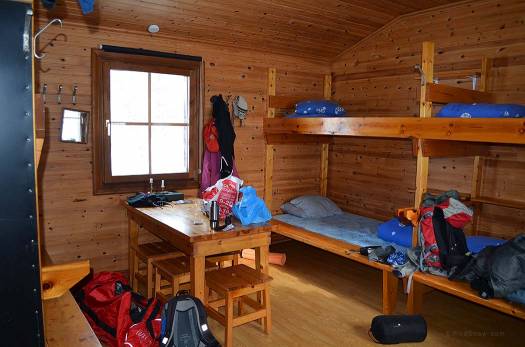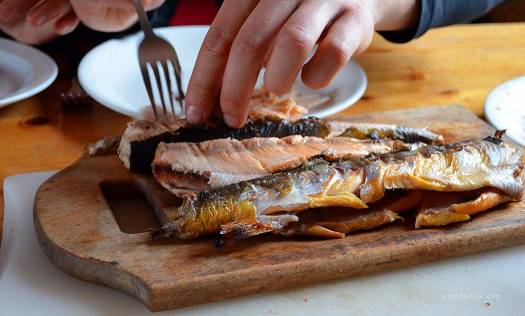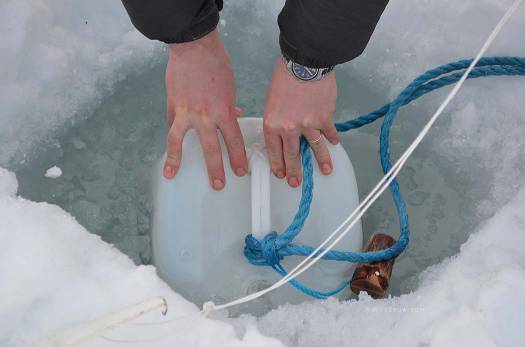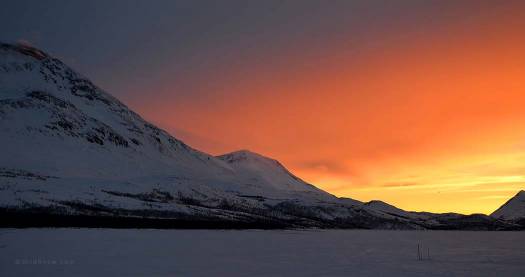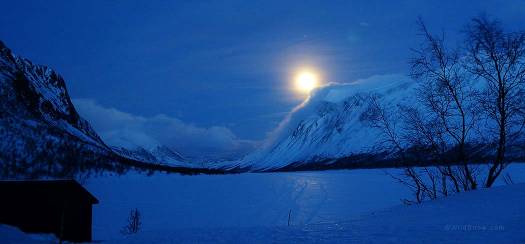Aaron Schorsch
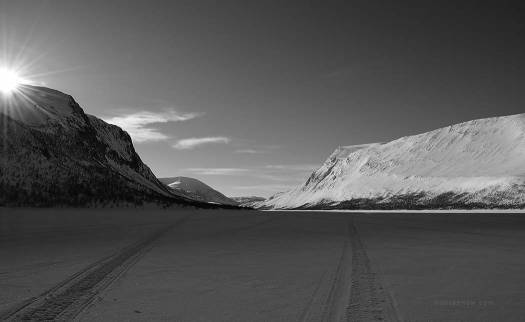
A view from the lake a Tuesajaure. The cabins can also be accessed by snowmobile by taking a much longer route around the national park.
The Swedish Tourism Organization (STF), started in 1885, organizes cabins “stugor,” along the length of Kungsleden and throughout Sweden. Each set of cabins has a camp host, stugvärd, who does maintenance, collects fees, cuts wood, and makes sure people are happy.
The stugvärd at Tuesajaure was a tall, outgoing, firefighter from southern Sweden named Daniel. We brought him the day’s newspaper as a gift, recent news being a luxury in a place without phone service, internet, or electricity. Daniel welcomed us, pointed us towards our shared cabin, and informed us of the wood-fired sauna times. Women only at 4, men at 5:30 and mixed at 7. We were delighted at the unexpected luxury.
The cabins are all painted brown. They look rather sad and boring from the outside, perhaps allowing them to blend into the landscape. The inside however is clean, light pine wood with a warm woodstove and a two burner gas cook stove. Mirja Andersson, a local mountain guide, and her boyfriend Anders were already in the room, and a wave of warmth from the woodstove greeted us as we stepped through the double set of doors.
The transition from cold and windy to warm and cozy was rapid and gratifying. Daniel had given Mirja and Anders three röding, or arctic char (which are very similar to trout) he caught ice fishing on the lake. They decided we would eat these as appetizers. We opted to grill the fish over the wood fire. Anders found a fish grill which miraculously fit into the woodstove. It took only a few minutes for the hot coals to cook the fish, which we ate steaming hot with our fingers, sprinkled with salt. Our main course was suovas (salted and smoked reindeer meat) sliced thin and fried with onions, served with spaghetti and washed down with red wine and many glasses of cold, clean unfiltered water from the lake.
We finished dinner around 7:30 pm but the sky promised several more hours of light. Anders and I ventured out to get more water from the lake, which consisted of removing a Styrofoam block, covered with snow, and then breaking through a thin layer of ice to reveal a square hole about two feet wide cut four feet deep into the ice. We submerged a 30 liter jug in the icy water and dragged it back to the cabin. Drinking unpurified water straight from a lake is a quite a shock for people from many places in the world, but the water in Sweden can be quite safe if taken from a clean source.
By 9:30 pm it was dark enough to light the two candles. Mirja, who is a NOLS instructor, told us about her 10 day skiing trips though Sarek National Park, touted as one of Europe’s last wildernesses. There are no buildings in Sarek, so they stay in tents to experience the remoteness and beauty of that mountainous landscape. On her time off though, she seemed to thoroughly enjoy the comfort of the cabin.
Daniel, the camp host, was making his evening rounds and stopped to chat. He had a fishing net set up under the ice and today had caught a fish called a burbot, which is like a cross between an eel and catfish. He was thoroughly disgusted by the fish but two of the guests, one a fish biologist and the other a chef, offered to cook it for him. He complained of his cabin smelling of burbot for days. We eventually snuggled into our blankets and drifted off to sleep after pulling down the blackout shades to prevent a 4 am sunrise wake-up.
(Guest blogger Aaron Schorsch is a chef, carpenter, farm hand, teacher, and baker who loves food, skiing, travel, canoeing and writing. He calls home wherever the snow is falling and the rivers are rushing, which is most often western Oregon. He is currently living above the Arctic Circle in northern Sweden with his wife Amanda. Check out his blog, Saveur The Journey.)
Beyond our regular guest bloggers who have their own profiles, some of our one-timers end up being categorized under this generic profile. Once they do a few posts, we build a category. In any case, we sure appreciate ALL the WildSnow guest bloggers!

